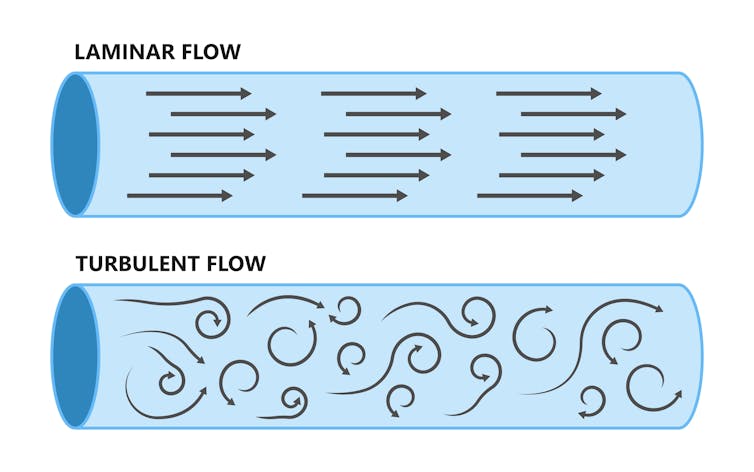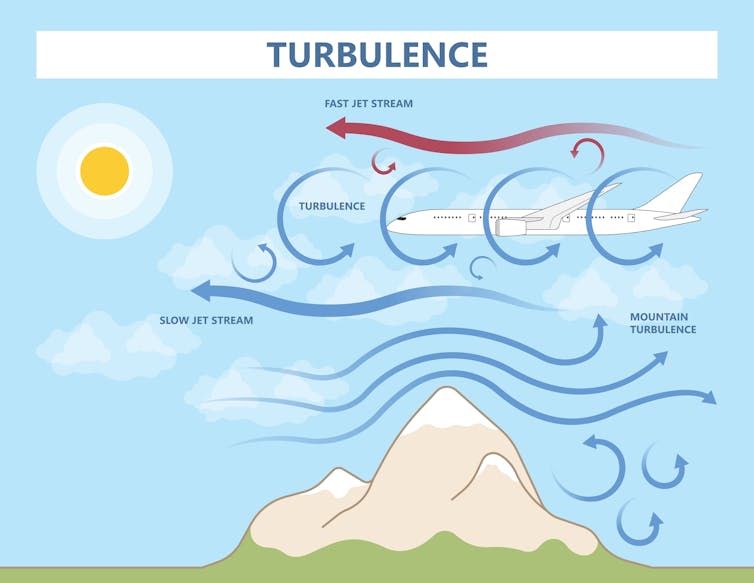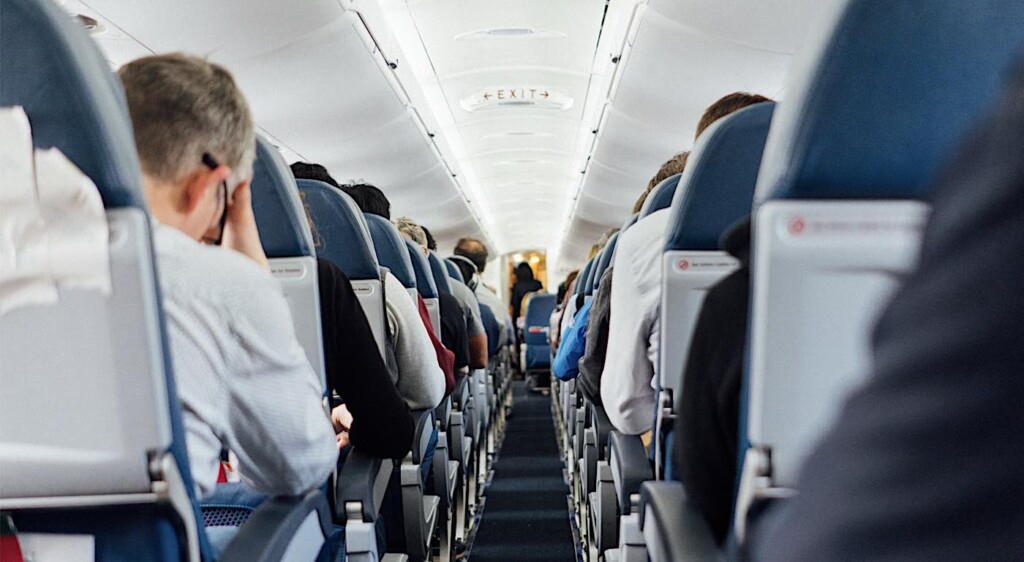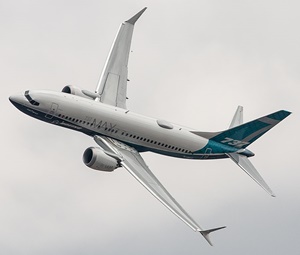New Delhi [India], March 10 (ANI): Passengers onboard an Air India flight from Chicago to Delhi on Thursday were forced to circle back to Chicago due to a technical snag, a spokesperson of the airlines said on Monday.
Saturday, 15 March 2025
No Toilets, No Flight: Air India Chicago-Delhi Passengers Stranded Mid-Air as Lavatories Fail
New Delhi [India], March 10 (ANI): Passengers onboard an Air India flight from Chicago to Delhi on Thursday were forced to circle back to Chicago due to a technical snag, a spokesperson of the airlines said on Monday.
Friday, 10 January 2025
Boeing adds new manufacturing quality control checks

Thursday, 9 January 2025
Air India launches inflight Wi-Fi services on domestic routes

Thursday, 19 September 2024
Air India to spend $400 million to revamp interiors of over half its fleet
 FILE PHOTO: Branding for Air India is seen on an Airbus A350-900 at the Farnborough International Airshow, in Farnborough, Britain, July 24, 2024. REUTERS/Toby Melville/File Photo
FILE PHOTO: Branding for Air India is seen on an Airbus A350-900 at the Farnborough International Airshow, in Farnborough, Britain, July 24, 2024. REUTERS/Toby Melville/File PhotoThursday, 6 June 2024
Chongqing Airlines to resume services to Colombo from 24 June

- Returns after four year hiatus with three weekly flights
Thursday, 23 May 2024
Snowstorm hits US: 2,000 flights canceled, more than 2,400 delayed
What is air turbulence?

You probably know the feeling: you’re sitting on a plane, happily cruising through the sky, when suddenly the seat-belt light comes on and things get a little bumpy.
Most of the time, turbulence leads to nothing worse than momentary jitters or perhaps a spilled cup of coffee. In rare cases, passengers or flight attendants might end up with some injuries.
What’s going on here? Why are flights usually so stable, but sometimes get so unsteady?
As a meteorologist and atmospheric scientist who studies air turbulence, let me explain.
What is air turbulence?
Air turbulence is when the air starts to flow in a chaotic or random way.
At high altitudes the wind usually moves in a smooth, horizontal current called “laminar flow”. This provides ideal conditions for steady flight.
 In ‘laminar flow’, air moves smoothly in one direction. When turbulence begins, it goes every which way. Shutterstock
In ‘laminar flow’, air moves smoothly in one direction. When turbulence begins, it goes every which way. ShutterstockTurbulence occurs when something disrupts this smooth flow, and the air starts to move up and down as well as horizontally. When this happens, conditions can change from moment to moment and place to place.
You can think of normal flying conditions as the glassy surface of the ocean on a still day. But when a wind comes up, things get choppy, or waves form and break – that’s turbulence.
What causes air turbulence?
The kind of turbulence that affects commercial passenger flights has three main causes.
The first is thunderstorms. Inside a thunderstorm, there is strong up-and-down air movement, which makes a lot of turbulence that can spread out to the surrounding region. Thunderstorms can also create “atmospheric waves”, which travel through the surrounding air and eventually break, causing turbulence.
Fortunately, pilots can usually see thunderstorms ahead (either with the naked eye or on radar) and will make efforts to go around them.
The other common causes of turbulence create what’s typically called “clear-air turbulence”. It comes out of air that looks perfectly clear, with no clouds, so it’s harder to dodge.
 Jet streams and mountains are common causes of clear-air turbulence. Shutterstock
Jet streams and mountains are common causes of clear-air turbulence. ShutterstockThe second cause of turbulence is jet streams. These are high-speed winds in the upper atmosphere, at the kind of altitudes where passenger jets fly.
While air inside the jet stream moves quite smoothly, there is often turbulence near the top and bottom of the stream. That’s because there is a big difference in air speed (called “wind shear”) between the jet stream and the air outside it. High levels of wind shear create turbulence.
The third thing that makes turbulence is mountains. As air flows over a mountain range, it creates another kind of wave – called, of course, a “mountain wave” – that disrupts air flow and can create turbulence.
Can air turbulence be avoided?
Pilots do their best to avoid air turbulence – and they’re pretty good at it!
As mentioned, thunderstorms are the easiest to fly around. For clear-air turbulence, things are a little trickier.
When pilots encounter turbulence, they will change altitude to try to avoid it. They also report the turbulence to air traffic controllers, who pass the information on to other flights in the area so they can try to avoid it.
Weather forecasting centres also provide turbulence forecasts. Based on their models of what’s happening in the atmosphere, they can predict where and when clear-air turbulence is likely to occur.
Will climate change make turbulence worse?
As the globe warms and the climate changes in coming decades, we think air turbulence will also be affected.
One reason is that the jet streams which can cause turbulence are shifting and may become more intense. As Earth’s tropical climate zones spread away from the equator, the jet streams are moving with them.
This is likely to increase turbulence on at least some flight routes. Some studies also suggest the wind shear around jet streams has become more intense.
Another reason is that the most severe thunderstorms are also likely to become more intense, partly because a warmer atmosphere can hold more water vapour. This too is likely to generate more intense turbulence.
These predictions are largely based on climate models, because it is difficult to collect the data needed to identify trends in air turbulence. These data largely come from reports by aircraft, the quality and extent of which are changing over time. These measurements are quite different from the long-term, methodically gathered data usually used to detect trends in the weather and climate.
How dangerous is air turbulence?
Around the globe, air turbulence causes hundreds of injuries each year among passengers and flight attendants on commercial aircraft. But, given the hundreds of millions of people who fly each year, those are pretty good odds.
Turbulence is usually short-lived. What’s more, modern aircraft are engineered to comfortably withstand all but the most extreme air turbulence.
And among people who are injured, the great majority are those who aren’t strapped in. So if you’re concerned, the easiest way to protect yourself is to wear your seat belt. ![]()
Todd Lane, Professor, School of Geography, Earth and Atmospheric Sciences, The University of Melbourne, The University of Melbourne
This article is republished from The Conversation under a Creative Commons license. Read the original article.
Tuesday, 14 May 2024
New Rule Requires US Airlines to Give Automatic Refunds for Canceled or Delayed Flights and Late Baggage

- Canceled or significantly changed flights:
- Passengers will be entitled to a refund if their flight is canceled or significantly changed, and they do not accept alternative transportation or travel credits offered. For the first time, the rule defines “significant change.” Significant changes to a flight include departure or arrival times that are more than 3 hours domestically and 6 hours internationally; departures or arrivals from a different airport; increases in the number of connections; instances where passengers are downgraded to a lower class of service; or changes that result in less accessible or accommodating situations to a person with a disability.
- Significantly delayed baggage return:
- Passengers who file a mishandled baggage report will be entitled to a refund of their checked bag fee if it is not delivered within 12 hours of their domestic flight arriving at the gate, or 15-30 hours of their international flight arriving at the gate, depending on the length of the flight.
- Extra services not provided:
- Passengers will be entitled to a refund for the fee they paid for an extra service — such as Wi-Fi, seat selection, or inflight entertainment — if an airline fails to provide this service.
- The DOT’s (U.S. Department of Transportation) final rule also makes it simple and straightforward for passengers to receive the money they are owed. Without this rule, consumers have to navigate a patchwork of cumbersome processes to request and receive a refund — searching through airline websites to figure out how make the request, filling out extra “digital paperwork,” or at times waiting for hours on the phone. In addition, passengers would receive a travel credit or voucher by default from some airlines instead of getting their money back, so they could not use their refund to rebook on another airline when their flight was changed or cancelled without navigating a cumbersome request process.
- Automatic: Airlines must automatically issue refunds without passengers having to explicitly request them or jump through hoops.
- Prompt: Airlines and ticket agents must issue refunds within seven business days of refunds becoming due for credit card purchases and 20 calendar days for other payment methods.
- In Cash or original form of payment: Airlines and ticket agents must provide refunds in cash or whatever original payment method the individual used to make the purchase, such as credit card or airline miles. Airlines may not substitute vouchers, travel credits, or other forms of compensation unless the passenger affirmatively chooses to accept alternative compensation.
- In the full amount: Airlines and ticket agents must provide full refunds of the ticket purchase price, minus the value of any portion of transportation already used. The refunds must include all government-imposed taxes and fees and airline-imposed fees, regardless of whether the taxes or fees are refundable to airlines.
Wednesday, 1 November 2023
Minister Pravin Gordhan Relaunches South African Airways, 26 Oct
- Date: Thursday, 26 October 2023
- Venue: The Royal Yacht Club, Table Bay Harbour, Cape Town
- Time: 18h00 for 18h30
- Dress Code: Business Casual with a Brazilian FlairAmongst the honored guests will also be Brazil's Vice Minister of Tourism, the Honourable Ana Carla Machado Lopes. Minister Pravin Gordhan Relaunches South African Airways, 26 Oct:
Friday, 25 August 2023
Boeing 737 MAX deliveries face delay due to new supplier defect

- Boeing announced on 23 August 2023 that it has discovered a new quality issue with its 737 MAX aircraft, specifically concerning a supplier, Spirit AeroSystems.
- The problem pertains to incorrectly drilled holes on the aft pressure bulkhead. Boeing noted that, as a consequence of this defect, there will be delays in near-future deliveries. The company is also assessing whether this issue might potentially jeopardize its ability to meet its annual delivery goal of at least 400 737s this year.
- In after-hours trading, Boeing's shares experienced a 2.7% decline, while Spirit AeroSystems’s shares saw a 6.1% drop.
- This recent supply-chain hiccup represents the most recent setback affecting the delivery of the revenue-generating MAX series. Prior to this, Boeing had revealed an issue in April, when Spirit had incorrectly installed brackets connecting the aft fuselage to the vertical tail.
- Boeing has officially confirmed that this latest problem will result in a delay in the first delivery of a MAX 8 aircraft to Malaysia Airlines. The airline had initially planned an arrival event for August 28th.
- Spirit AeroSystems stated that, as it relies on various suppliers for the aft pressure bulkhead, not all 737 fuselages are affected by the newly discovered issue of ‘elongated’ holes.
- Spirit has said that ‘given the information currently available’ to it, the problem would not significantly affect its delivery projections for the year.
- As of now, Boeing’s assessment suggests that the flaw is confined to a segment of its highly popular MAX8 model. However, the company is in the process of evaluating whether older-model 737 Next Generation jets might also be affected.
- Boeing reported that the exact number of jets requiring repairs, and the duration of the rework process, remain uncertain. The time needed for completion will depend on the individual condition of each aircraft.
- Boeing has affirmed that it would still be delivering 737s ‘that are unaffected’. The company acknowledged that the problem was discovered ‘recently’ but did not offer additional details.
- Spirit AeroSystems confirmed that it has introduced modifications to its manufacturing processes to rectify the problem.The Federal Aviation Administration (FAA) has acknowledged the matter and clarified that it does not compromise the safety of flight. Source: https://www.domain-b.com/
Wednesday, 19 July 2023
IndiGo places order for 500 Airbus aircraft

Monday, 20 February 2023
Air India signs deal to acquire 250 Airbus aircraft
Saturday, 8 May 2021
Australia to end ban on citizens returning from India

Saturday, 23 January 2021
United Airlines says it lost $7.1 billion in 2020

Sunday, 3 January 2021
Saudi lifts entry ban, flights resumed

Monday, 28 December 2020
Saudi extends ban on international flights by another week

Thursday, 24 December 2020
Saudi Arabia shuts down all international flights

Saturday, 12 December 2020
Pak airlines may face ban in 188 countries

- The Airlines that are being operated in Pakistan may face a ban from flying to 188 countries as the country has failed in their pilot licensing issue and to meet international standards as required by the International Civil Aviation Organisation (ICAO), a report of the Express Tribune said on Sunday.
- The International Civil Aviation Organization (ICAO) could ban PIA airlines and pilots from 188 countries for failing to comply with the rules, the report stated that.
- The ICAO issued a serious warning to the Pakistan Civil Aviation Authority (PCAA) over the safety concerns.
- In a letter on November 3, the ICAO stated that PCAA had failed to meet the international standards regarding the personnel licensing and training in relation to the licensing process for pilot.
- Regarding the warning, a Pakistan Airlines Pilots Association (Palpa) spokesperson said: "This will have serious consequences and could be a total disaster for Pakistan's aviation industry."
- Palpa alleged that it had been raising this issue since June 2020 but unfortunately it was neglected by the authorities concerned.Earlier, due to the licence scam, flag carrier Pakistan International Airlines (PIA) has already been barred from flying to the UK and the European Union. Source: https://www.daily-bangladesh.com
Monday, 30 November 2020
International flights to remain suspended till December 31
India on Thursday extended the suspension of scheduled commercial international flight operations to and from India till December 31.
Thursday, 26 November 2020
Singapore, Hong Kong to start ‘world first’ air travel bubble
Hong Kong and Singapore will start the long-awaited air travel bubble that will replace quarantine with Covid-19 testing from November 22.





